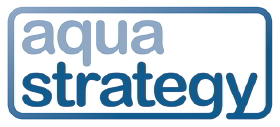Issue:
Smart technologies for tackling leakage from supply networks are generating huge interest, but traditional approaches remain essential and are currently the most viable option for many parts of the world. Keith Hayward spoke with expert Malcolm Farley about these two aspects of water loss management and about how they are both to be covered in the Global Leakage Summit taking place in London in September.

Water loss expert Malcolm Farley is well aware of the emerging smart technologies for helping utilities manage their networks and of the way that water loss as an issue is now increasingly embedded in the broader way that utilities are run and managed. He is equally aware that dealing with leakage depends on some very practical skills. ‘Even if you’ve got a full-blown smart, holistic, integrated data management system, you’d still need to have somebody who could go out and find the leaks,’ he comments.
It is not just the case that these practical skills and the more traditional approaches to tackling leakage remain important – in many situations around the world, these are what utilities have to rely on. ‘Traditional approaches are the only approach in some cases,’ says Farley, pointing to various countries in Africa, Asia and South America. Indeed, utilities may not even be in a position to take the fundamental step of splitting their networks into district metered areas (DMAs) because of a lack of budget or because of the extent of the changes to the network that would be needed, he adds.
Smart, data-generating technologies could potentially bring great benefits where needs are so great. However, Farley has seen first hand that practical realities can be overlooked when trying to implement them. ‘The whole thing stopped just because of a so-called inability to locally source lithium batteries,’ he comments in relation to one telemetry-based metering system he has seen, adding: ‘Smart is fine in certain circumstances, and smart is fine for most developed countries and some of the new low-middle income countries.’
Traditional approaches as a foundation
There remains a need to teach and promote the fundamentals of leakage control and wider water loss management. This applies to water utilities themselves, but it also applies to the consultancies who advise them, notes Farley.
For Farley, the starting point should be to carry out an audit. ‘That’s a very good starting point, to go into any water company, particularly in the developing world, to find out what they’re doing and how they’re doing it,’ he says. This takes the utility back to basics and gets them to look at aspects such as how the network is being operated, the staffing, the technologies and skills in place, and how leakage is calculated and managed. ‘A lot have got very good sounding programmes in place but then they don’t repair the leaks. So what’s the point of doing the work in the first place?’ Farley notes.
The full article is available to view as free sample content by registering here. To view the full content of Aqua Strategy, subscribe here and get instant access.
Keywords:
- utility management, smart water utilities, leakage






